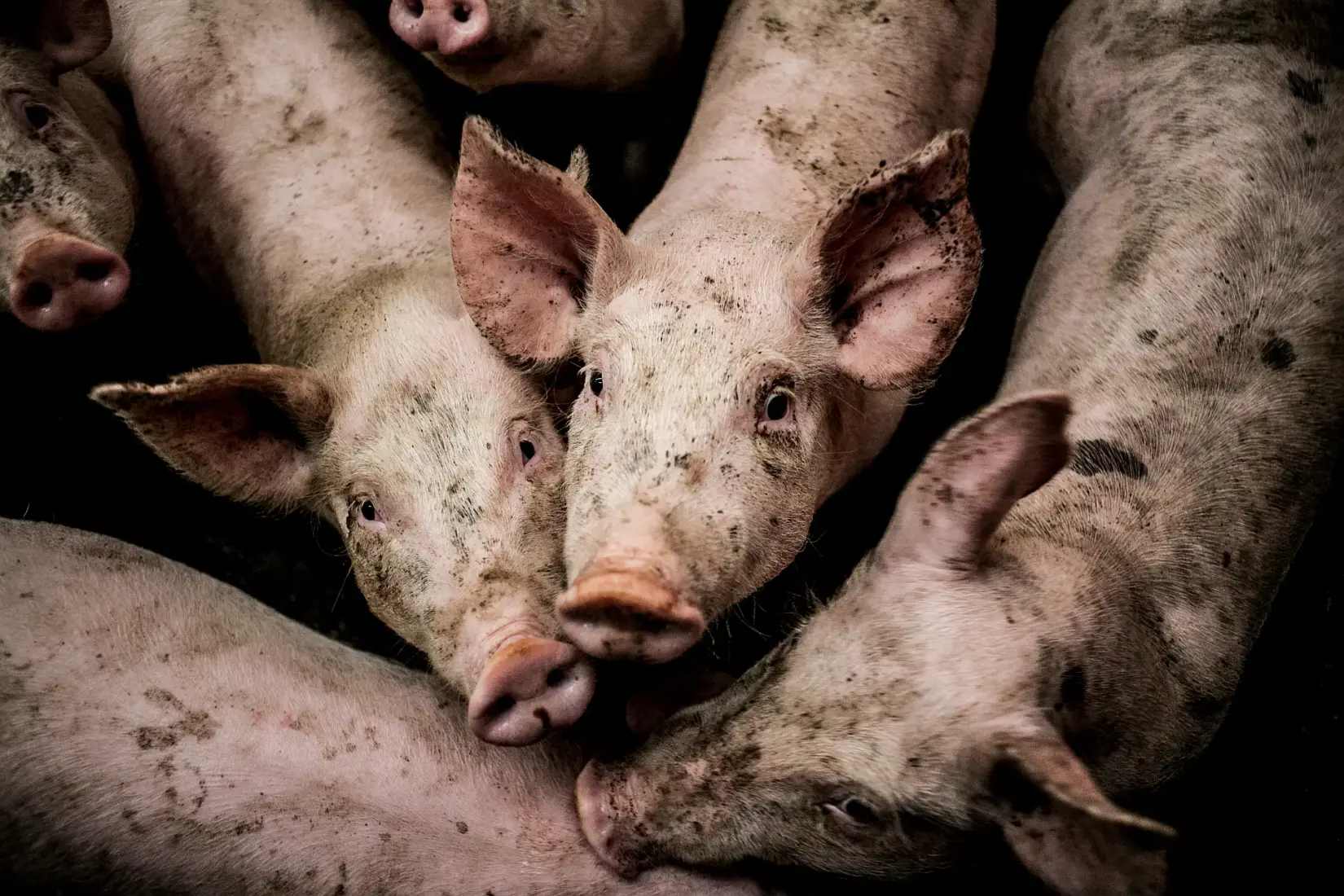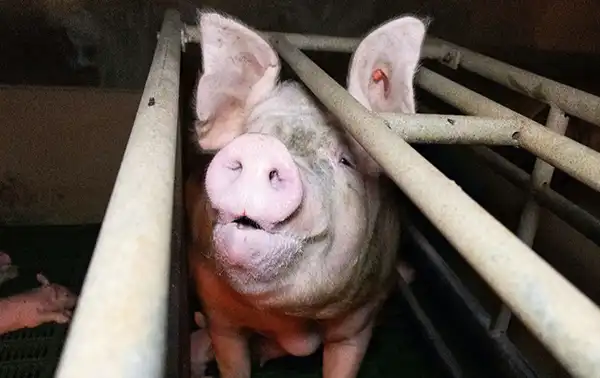Setting the Record Straight on Soya
Soya foods may confer many health benefits, but remain controversial. Here we review the latest research and set the record straight.
PHYTOESTROGENS
Many of the beneficial (and supposed harmful) effects of soya are attributed to phytoestrgens. These are the hormone-like chemicals found in many fruits, vegetables, pulses and whole grains. Isofavones are a type of phytoestrogen found in soya. The isoflavone content of different soya foods varies widely according to the processing method used in their production (Table 1).
Table 1. The isoflavone content of various soya foods
| Food | Isoflavone (mg/100g) |
| Miso | 43-60 |
| Soya “cheese” | 6-31 |
| Soya milk | 5-10 |
| Textured vegetable protein (TVP) | 68.3* |
| Soya yoghurt | 16 |
| Soya sauce | 0.1-1.6 |
| Tempeh | 29-53 |
| Tofu | 13.5-67 |
(References: 6, *26)
Although soya isoflavones have been consumed by millions of adults and children for centuries, they continue to be the source of some controversy. Scare stories suggest that soya can feminise boys, make men grow breasts, alter sexual development and disrupt fertility. These claims are based on in vitro and animal experiments and are not supported by human studies.
In 2003, amid concerns about infants consuming soya formula, the UK Department of Health’s Committee on Toxicity (COT) published a review on the health implications of phytoestrogens (6). They found that daily intakes of isoflavones varied widely around the world fro just 0.8-17.0mg in the UK, US, Australia and New Zealand to 18-200mg in Japan, China and Korea. Some groups in the UK consumed relatively more: infants fed soya formula, different ethnic populations, vegetarians and vegans, but their intake generally fell within levels seen in some Asian countries. The COT report acknowledged that there is no evidence that populations which regularly eat high quantities of soya, such as the chinese and Japanese, have altered sexual development or impaired fertility.
HEART HEALTH
In the 1990s, scientists found that replacing animal protein (meat, fish and dairy) with soya protein (tofu, soya milk and soya beans) lowered cholesterol and so could protect against heart disease (3). The role of soya protein in heart health has since been widely accepted. In 2002, the UK’s Joint Health Claims Initiative approved the health claim for soya, ‘the inclusion of at least 25g of soya protein per day, as part of a diet low in saturated fat, can help reduce blood cholesterol levels’ (13). Research also shows that 20-40g of soya protein per day can also lower blood pressure (27, 11). This is important as even small reductions in blood pressure can significantly lower the risk of heart disease.
DIABETES AND CARDIOVASCULAR DISEASE
People with diabetes tend to have low HDL cholesterol and raised triglyceride levels. An unhealthy balance of fats in the blood increases the risk of atherosclerosis which in turn can lead to a heart attack or stroke. In 2009, scientists found that 40g of soya protein per day for two months significantly reduced cholesterol in people with Type 2 diabetes (24). Lead researcher Dr Alison Duncan said, “This study provides evidence for soya as a dietary preventative strategy for adults with Type 2 diabetes to reduce their cardiovascular disease risk and, in so doing, improve their quality, and possibly length, of life.”
DIABETES
Pulses (peas, beans and lentils) have a low glycaemic index (GI); their carbohydrates break down gradually into the bloodstream High GI foods release glucose rapidly into the blood. Low GI foods can help improve diabetic control and diets rich impulses may even help prevent Type 2 diabetes. In a large study of middle-aged Chinese women, high intakes of soya beans were associated with a reduced risk of this disease (32). Phytoestrogens and soya peptides in traditional fermented soya foods such as tempeh may also help prevent and slow the progression of Type 2 diabetes (17). A traditional Japanese breakfast of fermented soya beans (natto), yam and okra and high GI white rice was shown to significantly lower both glucose and insulin concentrations (31). The results of those studies look promising but ore research is needed.
MENOPAUSAL SYMPTOMS
The lower incidence of hot flushes amongst Asian women has inspired researchers to look at the role of soya in menopausal symptoms. Numerous studies suggest soya isflavones can reduce the frequency or severity of hot flushes (22,4,1,8). A six-year study of over 1,000 Japanese women found that those who ate the most soya had less than half the number of hot flushes than those eating the least (23). As the safety of specific amounts of isoflavones has not yet been established, it may be better to obtain isoflavones from whole soya foods rather than soya isolates or supplements.
BONE HEALTH
Numerous studies suggest that soya protein may help protect bone density (2,30,19,35). For example, 40g of soya protein per day for six months significantly increased the bone density of the lumbar spine of a group of postmenopausal women (25). Overall, the clinical data suggest that around 80mg per day of isoflavones (the amount founding 125g of tofu, two small soya yoghurts and a large glass of soya milk) are needed to obtain bone health benefits but population studies suggest lower amounts may be effective. Soya foods cannot replace medication for osteoporosis, but health professionals can feel justified in encouraging postmenopausal women, concerned about bone health, to include soya foods in their diet (20). The relatively simple inclusion of soya foods may even offer a cheap and non-pharmacological intervention for prevention of osteoporosis (18).
BREAST CANCER
There is strong evidence that eating soya foods during adolescence reduces the risk of breast cancer later in life. The Shanghai Breast Cancer Study looked a 1,400 breast cancer cases in China and found that women who ate the most soya as teenagers had half the risk of breast cancer as adults (28). Similar findings came from a study of over 1,000 Asian-American women (including 501 breast cancer patients); those who ate soya a least once a week during adolescence had a significantly reduced risk of breast cancer (33). More recently, a study of over 1,500 Asian-American women found that eating soya foods during childhood reduced the risk of breast cancer by 60 per cent (14). A further protective effect was also seen in those who ate soya during adolescence and adulthood.
Contrary to earlier clinical studies suggesting that soya may promote breast tumour growth in some women with the disease, recent studies show that soya foods are not adversely related to breast caner prognosis. The Shanghai Breast Caner Survival Study looked at over 5,000 women previously diagnosed with breast cancer an average of four years earlier (29). Results showed that those who ate more soya foods (11g of soya protein per day) were less likely to die from the disease and had a significantly lower risk of recurrence. The authors concluded that for women with breast cancer, consuming soya foods improves prognosis. A more recent study looking at the isoflavone intakes of over three thousand breast cancer survivors from the US found that as isoflavone intake increased, risk of death decreased by up to 54 percent (5). The authors concluded that clinicians no longer need to advise against soya consumption for women diagnosed with breast cancer.
PROSTATE CANCER
Prostate cancer rates vary widely around the world, peaking in developed wealthy countries. Japan is the exception, where prostate cancer rates are surprisingly low despite the high standard of living. Some evidence suggests that dietary soya may contribute to the lower risk. in 1998, a large-scale study across 59 countries concluded that men eating an affluent diet (including dairy milk, meat and poetry), were more likely to die from prostate cancer than those eating a diet based on cereals, soya beans, nuts and oilseeds (12). More recently, researchers found that non-fermented soya foods (tofu and soya milk) lowered the risk of prostate cancer by up to 26 percent (34). Interestingly, fermented soya foods such as miso and soya sauce did not have the same effect. In summary, there are no human studies that show an increased risk of cancer due to soya consumption, but growing evidence suggests that it provides protection.
COGNITIVE FUNCTION
Several studies suggest that soya foods improve both short-term and long-term memory, mental flexibility and planning. Researchers at the Centre for Neuroscience at King’s College London investigated the effects of a high soya diet (100mg isoflavones per day) compared to a low soya diet (0.5mg isoflavones per day). After 10 weeks, those on the high soya diet showed significant improvements in short and long-term memory and mental flexibility (10). Further studies support this beneficial effect (7,10). However, benefits may be restricted to people under the age of 65 (16,15). Again, these results look promising but more research is need dot confirm how much soya makes a difference.
THYROID FUNCTION
A small number of studies have suggested that soya isoflavones may affect thyroid function by lowering thyroid hormone concentrations. However, a review of 14 studies examining the effects of soya on thyroid function found little evidence that it has adverse effects in people whose thyroid function is normal and whose diet contains sufficient iodine (21). The authors raised the possibility that soya foods may interfere with absorption of medication containing synthetic thyroid hormone, but say that hypothyroid adults need not totally avoid soya foods.
There may be a theoretical concern that in individuals with compromised thyroid function and/or whose iodine intake is marginal, soya foods may increase risk of developing hypothyroidism. In a cautionary statement, the COT advises healthcare professionals to be aware of possible links between isoflavones in soya infant formulas and thyroid function, particularly in cases of congenital hypothyroidism (6). The general consensus is that all people, whether soya consumers or not, should insure their intake of iodine is adequate.
Taken together, the research shows that soya foods continue to be a healthy, versatile and safe option for most people of all ages.
SOYA-BASED INFANT FORMULA
Breast milk is the best option for most infants, but some mothers are unable to, or choose not to breastfeed. In these cases, infant formula milks are recommended until the child is one. This is because non-formula milks contain too much salt, protein and not enough iron and other nutrients to meet an infant’s needs. There are many types of infant formulas including specially formulated ones for babies with cows’ milk allergy or intolerance (hydrolysed-protein or lactose-free formula respectively).
Mothers in the UK are encouraged not to use soya formula unless advised to by their doctor. However, numerous studies show that infants fed soya formula grow and develop normally. in the US, 20 to 25 percent of all formula-fed babies use soya formula (IV). Millions of American infants have been fed soya formula over the past three decades (I). The absence of any reported ill effects on these infants (now many of them adults in their 30s and 40s) would suggest there are no adverse effects. The COT report found no evidence of altered sexual development or impaired fertility among human populations eating lots of soya. Just one single human study has examined this; they found no evidence of adverse effects and said their findings were reassuring (III). In summary, soya formulas continue to provide a safe feeding option for most formula-fed infants (II).




